| Auditory skills |
Speech milestones
|
Birth–3 Months
- Increases or decreases sucking behavior in response to sound
- Auditory awareness
- Responds to sound by smiling, head turning, stilling, startling
- Responds to loud sounds
- Recognizes mother’s/ caregiver’s voice, becomes quiet when mother soothes while crying
|
Birth–3 Months
- Makes pleasure sounds (cooing, gooing)
- Smiles when sees you
- Make reflexive crying sounds when hungry or uncomfortable.
- By two months the child will be starting coo in response to his mother’s voice.
|
4–6 Months
- Notices toys that make sounds
- Pays attention to music
- Sound begins to have meaning
- Listens more acutely
- Starts to associate meaning to sound, e.g. responds to own name occasionally
- Responds to changes in vocal inflections. Responds to changes in tone of your voice
- Starts to localize source of voice with accuracy. Moves eyes in direction of sounds
- Listens to own voice
|
4–6 Months
- Babbling sounds more speech-like with many different sounds, including p, b and m
- Chuckles and laughs
- Vocalizes excitement and displeasure
- Differential cry: start to make some sounds, will laugh and squeal, but will still cry loudly when hungry, uncomfortable or annoyed.
- Coos
- Yells
- Starts to change duration, pitch and intensity (prosodic features)
- Uses vowel [a] as in car
- Plays at making sounds
|
7 Months– 12 months
- Enjoys games like peek-a-boo and pat-a-cake
- Turns and looks in direction of sounds
- Listens when spoken to
- Associates meaning to words. Recognizes words for common items like “cup”, “shoe”, “book”, or “juice”
- Begins to respond to requests (e.g. “Come here” or “Want more?”)
- Discriminates suprasegmental aspects of duration, pitch and intensity
- Has longer attention span
- Discriminates vowel and syllable content
- Monitors own voice and voices of others
- Localizes sound from a distance
- Discriminates speaker’s voice from competing stimuli
|
7 Months–12 months
- Babbling has both long and short groups of sounds such as “tata upup bibibibi”. Uses vowels like o, a, ae
- Uses speech or non crying sounds to get and keep attention
- Uses gestures to communicate (waving, holding arms to be picked up)
- Imitates different speech sounds
- Has one or two words (hi, dog, dada, mama) around first birthday, although sounds may not be clear
- Uses a “singsong” voice
- Imitates patterns of intonation
- Uses some consonants [p, b, m, d]
- Imitates sounds and number of syllables used by others
- Uses suprasegmental features
- Uses longer strings of repeated syllables
|
|
Language Comprehension
|
Language Expression
|
Birth- 3 months
- Listen to the rhythm and melodies of speech.
- Usually can pick out their mothers’ voices.
- Learn the rhythm and melodies of two languages when both are frequently spoken in their environment.
- startles to sudden noises, becomes alert to sounds by blinking or widening eyes
- Responds to speaker’s face
- Responds to talking by quietening or smiling
- Prefer “baby talk” and voices with high pitch.
|
Birth- 3 months
- Cries to express hunger and anger
- Begins to vocalize to express pleasure
- Use undifferentiated crying, which is crying that sounds the same and does not vary by specific need.
- Make cooing sounds, often vowel sounds such as “ah-ah-ah” or “ooh-ooh-ooh.”
- At about 3 months, make cooing sounds back to someone who is talking to them.
|
4 Months – 6 Months
- Recognizes own names occasionally
- Frequently localizes sound source with head or eye turn. Usually stops crying in response to voice
- Discriminates between angry and friendly vocal tones, e.g. cries in response to an angry voice
|
4 Months – 6 Months
- Make sounds like “goo” and blow bubbles at the same time.
- At about 6 months, start to babble, repeat sounds, such as “ma-ma-ma” or “bah-bah-bah” to get attention or express feeling.
- By 6 months of age, vary their cries to signal specific needs.
- Vocalizes in response to singing
- Vocalizes in response to speech
- Vocalizes when alone or with others
|
7 Months – 12 Months
- Appears to recognize names of family members in connected speech, even when person named is not in sight
- Responds with appropriate arm gestures to such words as up, high, bye bye, etc.
- Enjoys music or singing
- Appears to listen to whole conversation between others
- Regularly stops activity when name is called
- Appears to recognize the names of a few common objects by localizing them when they are named
- Will sustain interest up to a minute while looking at pictures or books with adult
- Hear words as distinct sounds.
- By 9 months, usually recognize the meaning of some facial expressions and tone of voice, such as when a parent says “No!
- Appears to enjoy listening to new words
- Generally able to listen to speech without being distracted by other competing sounds
- Occasionally gives toys and objects to adult on verbal request
- Occasionally follows simple commands, e.g. Put that down.
- Responds to music with body or hand movement in approximate time
- Demonstrates understanding of verbal requests with appropriate head and body gestures
- Shows increased attention to speech over prolonged periods of time
- Begin to follow simple commands like “give me the toy.”
- Usually understand “mama” and “dada” and can identify each parent.
|
7 Months – 12 Months
- Repeats CV syllables in babble [pa pa]
- Starts to respond with vocalizations when called by name
- Plays more games, e.g. pat a cake, peek a boo, hand clapping, etc. and vocalizes during games
- Appears to “sing”
- Vocalizes to great a familiar adult
- Calls to get attention
- Uses some gestures and language appropriately, e.g. shakes head for “ho”
- Repeat sounds that they hear.
- Mimic the rhythm of the way others talk to them.
- May say words like “mama” and “dada.”
- By 9 months may wave “bye-bye” when prompted.
- Uses jargon of 4 or more syllables – short sentence-like structures without true words
- Starts to use varied jargon patterns with adult intonation patterns when playing alone
- Initiates speech gesture games such as round and round the garden
- Talks to toys/objects using longer verbal patterns
- Frequently responds to songs or rhymes by vocalizing
- Correctly refer to each parent as “mama” or “dada.”
- Use the index finger to point to things they want and need.
- At about 12 months, say a few single words other than “mama” or “dada.”
|
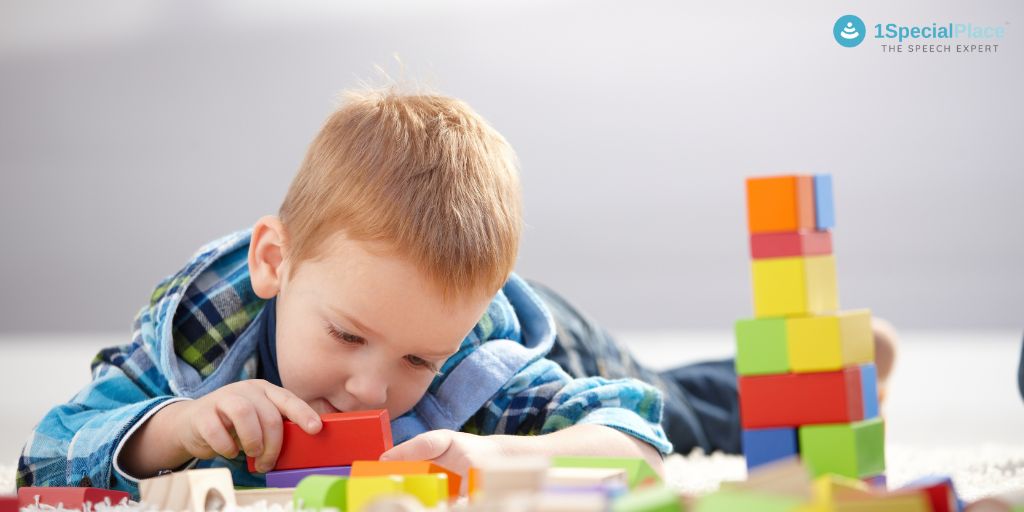

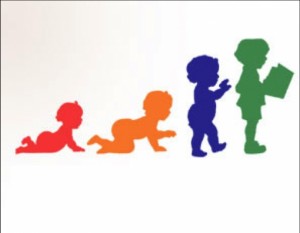

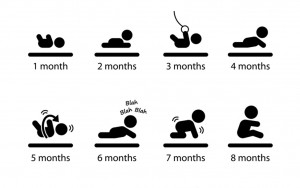
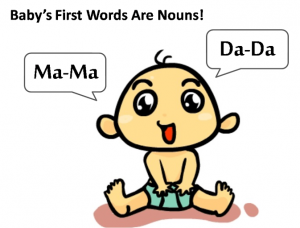
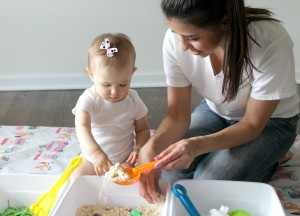
Leave a Comment
(0 Comments)